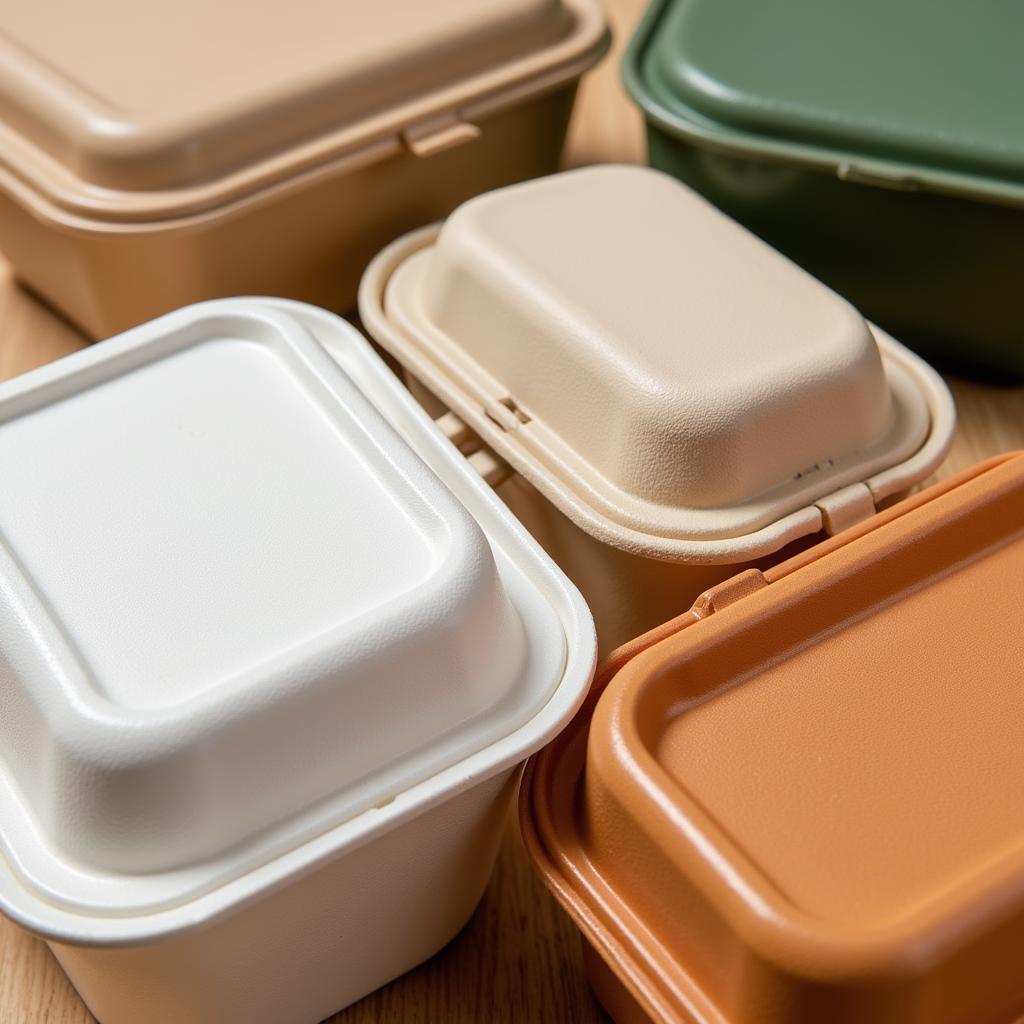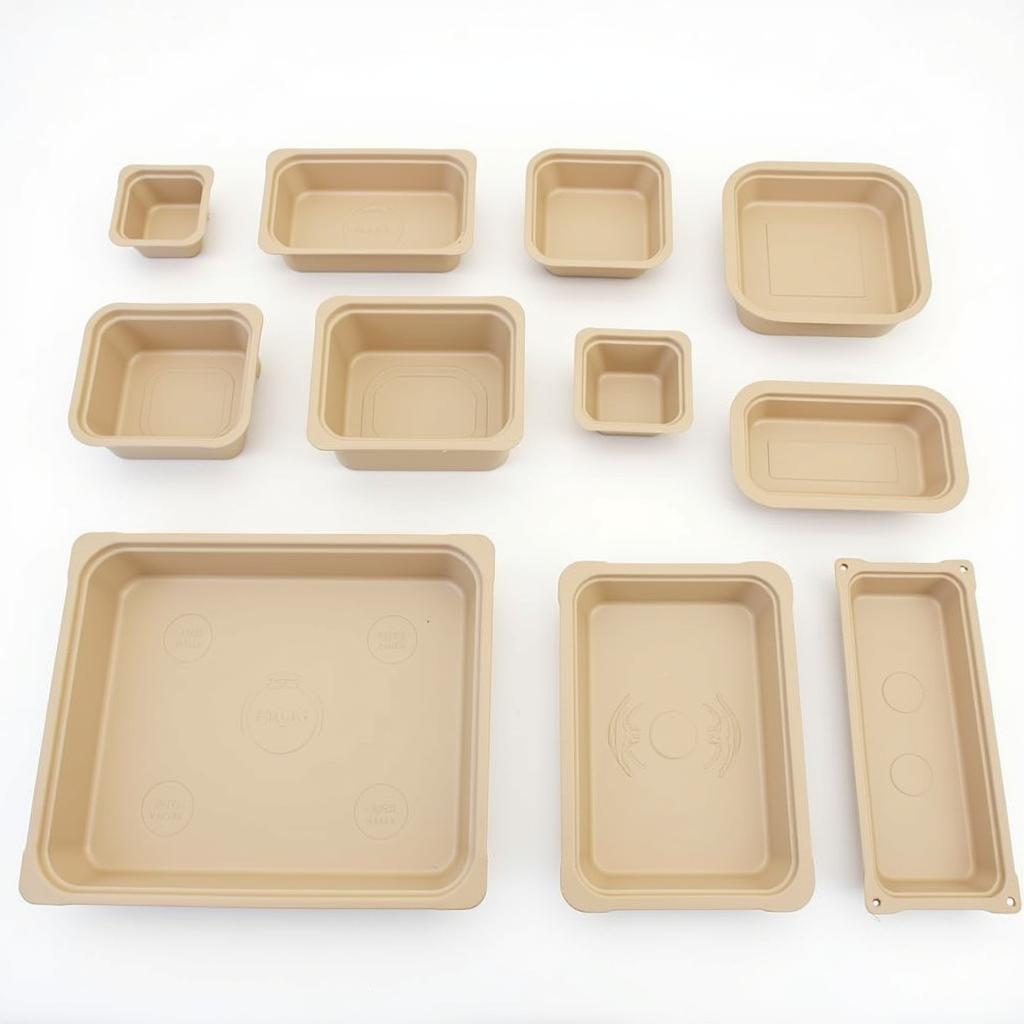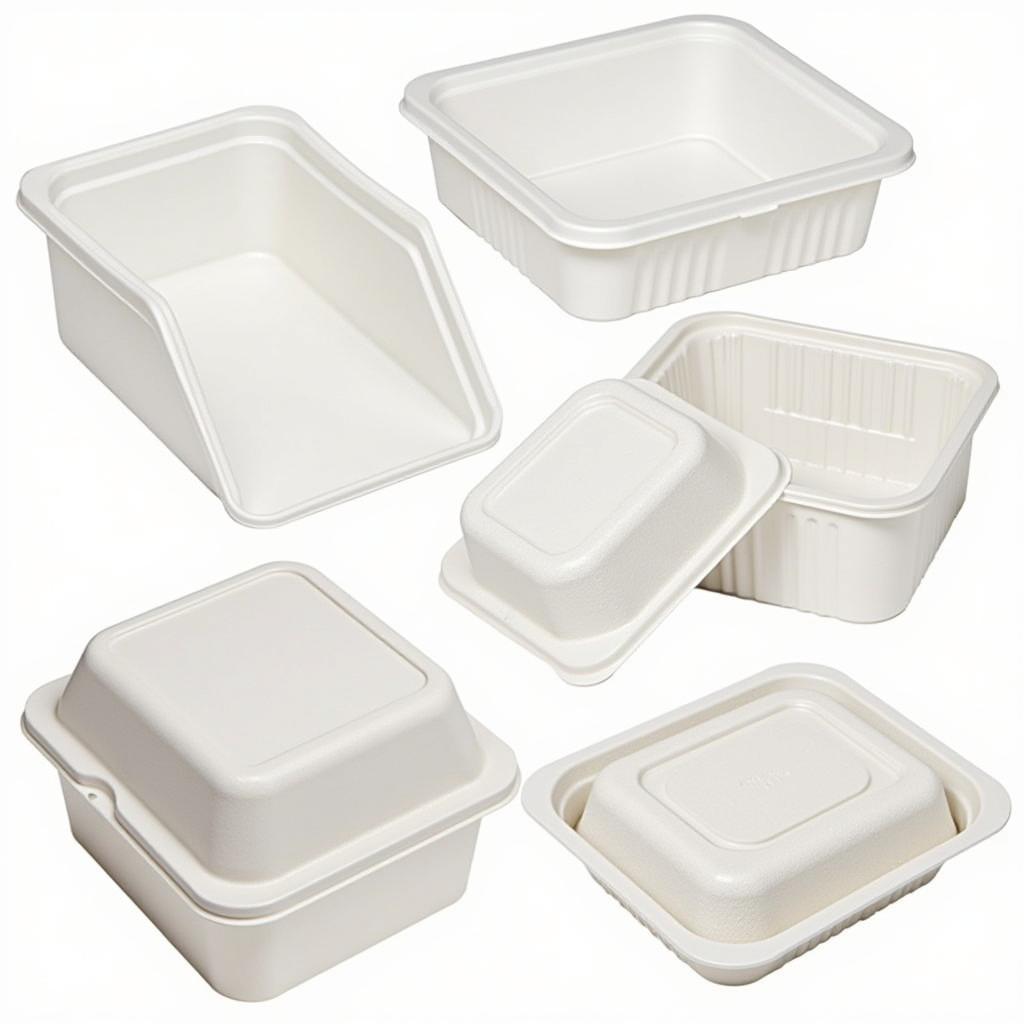Plastic Food Boxes are ubiquitous in kitchens worldwide, offering a convenient and reusable solution for storing leftovers, packing lunches, and organizing meals. Yet, with a plethora of options available, selecting the right plastic food containers can be surprisingly challenging. This guide explores the various aspects to consider when choosing plastic food boxes, ensuring you make informed decisions that prioritize both functionality and safety.
Understanding the Types of Plastic Food Boxes
Navigating the world of plastic food boxes starts with understanding the different types available. Each type boasts unique characteristics, making them suitable for specific purposes:
- Polypropylene (PP): Renowned for its durability and heat resistance, polypropylene is a popular choice for microwave-safe containers. Look for the “PP” symbol at the bottom of the container to ensure it’s safe for reheating.
- Polyethylene (PE): This lightweight and flexible plastic is often used for disposable food containers and wraps. While PE containers are generally considered safe for food contact, they are not as heat-resistant as PP containers.
- Tritan (PCTG): Tritan offers a premium alternative, combining the durability of PP with the clarity of glass. Tritan containers are BPA-free, stain-resistant, and dishwasher-safe, making them a popular choice for families and eco-conscious individuals.
 Types of Plastic Food Boxes
Types of Plastic Food Boxes
Factors to Consider When Choosing Plastic Food Boxes
Selecting the right plastic food boxes depends on various factors beyond the type of plastic used. Here are some crucial aspects to consider:
1. Size and Shape
Consider your typical portion sizes and storage needs. If you frequently pack lunches or store leftovers, opt for a variety of sizes, including smaller containers for snacks and larger ones for main courses. Square or rectangular containers are generally more space-efficient for stacking in the refrigerator or lunch bag.
 Different Sizes and Shapes of Plastic Food Boxes
Different Sizes and Shapes of Plastic Food Boxes
2. Leak-Proofness
Nobody wants a leaky lunch bag! Choose containers with secure lids and airtight seals to prevent spills and maintain freshness. Look for containers with locking mechanisms or silicone gaskets for added leak-proof assurance.
3. Microwave and Dishwasher Safety
If you plan to reheat food directly in the container, ensure it’s labeled as microwave-safe. Similarly, dishwasher-safe containers offer ultimate convenience for cleaning. Always check the manufacturer’s instructions for recommended heating and cleaning methods.
4. Durability and Stain Resistance
Invest in durable containers that can withstand regular use and cleaning without cracking, warping, or staining. Opt for BPA-free and stain-resistant materials like Tritan or high-quality polypropylene for long-lasting performance.
5. Sustainability
Consider the environmental impact of your plastic food boxes. Choose reusable options over disposable ones to reduce waste. Look for containers made from recycled materials or brands committed to sustainable practices.
 Sustainable Choices in Plastic Food Boxes
Sustainable Choices in Plastic Food Boxes
FAQs about Plastic Food Boxes
1. Are plastic food boxes safe for food storage?
When chosen carefully, plastic food boxes made from FDA-approved materials are generally safe for food storage. Look for containers labeled as “BPA-free” and avoid heating food in containers not explicitly marked as microwave-safe.
2. Can I put plastic food boxes in the freezer?
Not all plastic food boxes are freezer-safe. Check the manufacturer’s instructions to ensure the container is suitable for freezing. Some containers may become brittle or crack at low temperatures.
3. How do I prevent staining plastic food boxes?
Tomato-based sauces and oily foods can stain plastic containers. To prevent staining, try these tips:
- Hand wash the container immediately after use.
- Soak the container in a baking soda and water solution before washing.
- Store the container with the lid open to allow it to air dry completely.
4. How long can I store food in plastic food boxes?
While plastic food boxes can help preserve freshness, it’s essential to follow general food storage guidelines. Leftovers should be consumed within 3-4 days, while fresh fruits and vegetables can last up to a week. Always check for signs of spoilage before consuming any stored food.
Conclusion
Choosing the right plastic food boxes involves considering various factors, including material, size, shape, and intended use. By understanding your needs and prioritizing safety, durability, and sustainability, you can confidently select plastic food containers that simplify meal prep, reduce waste, and keep your food fresh and organized. For those seeking eco-friendly alternatives, explore our range of eco friendly food packaging for small business. If you’re looking for specialized storage solutions, check out our selection of box for japanese food. And for those seeking unique food options, don’t miss our fabric food collection. We offer a variety of plastic boxes for food and 3 compartment food container options to suit your needs. For any questions or assistance, please reach out to our 24/7 customer support team at Phone Number: 02437655121, Email: [email protected], or visit us at our address: 3PGH+8R9, ĐT70A, thôn Trung, Bắc Từ Liêm, Hà Nội, Việt Nam.